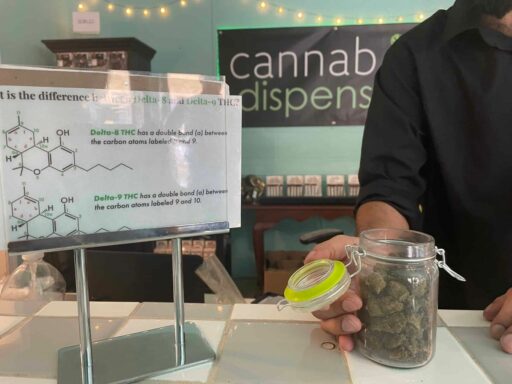The debate over marijuana legalization is multifaceted, encompassing economic, social, legal, public health, and political dimensions. As more regions embrace legalization, it’s crucial to analyze the outcomes and challenges that arise. This essay delves into the economic impact, social and legal hurdles, public health consequences, political dynamics, and international perspectives to provide a comprehensive understanding of marijuana legalization’s effects.
Key Takeaways
- Marijuana legalization offers significant revenue through taxation, but also incurs regulatory and enforcement costs.
- Legalization can reshape crime rates and alter law enforcement priorities, with a need for equitable social licensing programs.
- Public health outcomes are mixed, with marijuana posing less risk than some substances, but raising concerns for mental health and youth.
- Political support for marijuana policy reform is often bipartisan, yet conflicts between state and federal laws persist.
- International experiences with legalization provide valuable lessons, but must be balanced against global drug control treaties.
Evaluating the Economic Implications of Marijuana Legalization

Revenue Generation and Taxation
The legalization of marijuana introduces a new source of tax revenue for governments, which can be substantial. This revenue is often earmarked for public services and initiatives, creating a direct financial benefit from the regulated sale of cannabis. For instance, a tax of 15% on non-medicinal marijuana sales can support youth programs, environmental protection, and law enforcement, while also reducing criminal justice costs.
The structured taxation and allocation of funds demonstrate a strategic approach to utilizing marijuana sales to bolster public programs and reduce the financial burden on the state.
Here’s a snapshot of how tax revenue from marijuana sales can be allocated:
- Youth programs
- Environmental protection
- Law enforcement
The restriction of sales in areas near schools and the prohibition of public consumption are measures that ensure the responsible implementation of these policies.
Impact on Employment and Industry Growth
The legalization of marijuana has catalyzed a burgeoning industry, creating a multitude of job opportunities and stimulating economic growth. The cannabis sector has rapidly become a significant contributor to job creation, spanning cultivation, retail, and ancillary services.
- Cultivation and harvesting
- Manufacturing and processing
- Distribution and retail
- Ancillary services (e.g., legal, marketing, security)
The ripple effect of this industry growth extends beyond direct cannabis-related jobs, influencing sectors such as real estate, equipment manufacturing, and professional services. As the industry matures, the demand for skilled labor in areas such as agricultural technology, product testing, and quality control is expected to rise.
The symbiotic relationship between the marijuana industry and local economies is evident, with industry growth fostering regional development and innovation.
While the economic benefits are clear, the industry also faces challenges in terms of regulatory compliance, banking restrictions, and the need for continuous workforce training to keep pace with evolving industry standards.
Costs of Regulation and Law Enforcement
The legalization of marijuana brings with it a complex web of regulatory requirements and law enforcement adjustments. The shift from prohibition to regulation necessitates significant investment in new systems and training. For instance, law enforcement agencies must adapt to new laws, focusing on regulation compliance rather than criminalization. This includes the development of protocols for legal sales, ensuring products are not sold to minors, and monitoring for impaired driving.
- Development of regulatory frameworks
- Training for law enforcement and judiciary
- Public education campaigns
- Monitoring and compliance efforts
The reallocation of resources from criminalization to regulation may lead to a more efficient use of funds, potentially reducing the overall costs associated with marijuana-related offenses.
However, the initial outlay for setting up regulatory bodies, creating licensing systems, and educating the public and law enforcement can be substantial. The experience of states like California shows that while there may be a reduction in criminal justice costs, the complexity of the regulatory landscape can lead to unforeseen expenses, such as litigation over licensing disputes.
Assessing the Social and Legal Challenges

Shifts in Crime Rates and Law Enforcement Priorities
The legalization of marijuana has prompted significant shifts in crime rates and law enforcement priorities. Decriminalization efforts have led to a reduction in arrests for marijuana possession, freeing up resources for addressing more serious offenses. This change reflects a broader trend towards treating addiction as a public health issue rather than a criminal justice one.
- Legalization has resulted in fewer court cases related to marijuana.
- Law enforcement can redirect efforts towards more pressing criminal activities.
- Public defenders and the legal system are less burdened by minor drug offenses.
The reorientation of police resources away from marijuana-related offenses allows for a more strategic approach to public safety, focusing on violent crimes and the opioid crisis that continues to affect communities.
While the long-term effects of these policy changes are still unfolding, early indicators suggest a positive impact on the efficiency and focus of law enforcement agencies. The effectiveness of these shifts, however, will depend on the continued investment in rehabilitation and education to prevent substance abuse.
Social Equity and Licensing Programs
The legalization of marijuana has brought to the forefront the need for social equity in the licensing process. Ensuring fair access to the burgeoning industry for communities historically impacted by drug laws is a critical aspect of legalization efforts. To address this, some regions have implemented innovative strategies to balance the scales.
One such approach involves the creation of two distinct lotteries for license allocation: one for social equity applicants and another for the general pool. This dual-lottery system aims to facilitate the issuance of licenses even amidst potential legal disputes over social equity measures.
The goal is to provide a level playing field where social equity applicants have a genuine opportunity to participate in the market from the outset.
Additionally, the introduction of a temporary license system for social equity applicants is under consideration. This would allow qualified individuals or groups to obtain early licenses, provided they demonstrate adequate financial and managerial readiness. If the number of applicants exceeds the available licenses, a lottery would be used to determine the recipients.
The table below summarizes the proposed measures to enhance social equity in the licensing process:
| Measure | Description |
|---|---|
| Dual-Lottery System | Separate lotteries for social equity and general applicants to mitigate legal challenge risks. |
| Temporary Licenses | Early access for qualified social equity applicants through a lottery if necessary. |
These initiatives reflect a growing recognition of the importance of social justice in the cannabis industry and a commitment to rectifying past injustices.
Legalization’s Influence on Public Perception and Usage Trends
The legalization of marijuana has undeniably altered public perception, with many viewing cannabis as a legitimate and safe alternative to other substances. This shift is reflected in the growing number of individuals who support both medical and recreational use.
- Support for legalization has surged, with a significant portion of the population advocating for its medical and recreational applications.
- The stigma surrounding marijuana has diminished, leading to a more open dialogue about its uses and benefits.
- There has been an increase in educational resources related to cannabis, contributing to a more informed public.
The normalization of marijuana through legalization efforts has paved the way for a more nuanced understanding of its role in society.
However, concerns about increased usage, particularly among adolescents, persist. It is crucial to continue monitoring trends and implementing preventive measures to mitigate potential risks associated with higher accessibility and acceptance of marijuana.
Analyzing the Public Health Outcomes

Comparative Safety: Marijuana vs. Alcohol and Other Substances
The debate on the safety of marijuana compared to alcohol and other substances is multifaceted, with proponents highlighting marijuana’s relatively low risk of overdose and addiction. Marijuana is often considered safer than alcohol, a substance linked to numerous health issues and a high potential for abuse. However, concerns persist regarding the possible health implications of marijuana, particularly among adolescents.
- Marijuana use disorder is more prevalent with certain forms of consumption, such as blunts.
- The risk of developing cannabis use disorder varies with regional cannabis policies.
While it is virtually impossible to overdose on marijuana, the long-term effects and dependency risks associated with its use require careful consideration.
Studies indicate that the adjusted relative risks (aRRs) for cannabis use disorders differ significantly across regions and policy environments, suggesting that legalization’s impact on safety is not uniform. Sensitivity analyses reinforce these findings, though they are preliminary and exploratory in nature.
Mental Health Concerns and Adolescent Risks
The legalization of marijuana has brought with it concerns regarding its impact on mental health, particularly among adolescents. The risk of developing mental health issues is associated with cannabis use frequency, duration, intensity, and types of cannabis use. Factors such as gender, minority status, and the age of onset of cannabis use can significantly increase these risks.
A review of recent studies indicates a troubling association between cannabis use and a range of mental health problems in young people. These include depression, psychosis, suicidal tendencies, and cognitive impairments. The table below summarizes the key findings:
| Mental Health Issue | Association with Cannabis Use |
|---|---|
| Depression | Positive correlation |
| Psychosis | Increased risk |
| Suicidal Tendencies | Higher rates of ideation and attempts |
| Cognitive Impairment | Potential for long-term effects |
The analysis revealed that cannabis use can increase the risk of suicidal ideation, suicidal thoughts, and suicidal plans among adolescents.
It is imperative to increase awareness among young people about the negative mental health impact of cannabis use. This includes understanding the potential for addiction and the long-term consequences that early, frequent, and heavy use can have on academic performance and social development.
The Role of Education and Prevention Strategies
The successful legalization of marijuana hinges not only on the regulatory framework but also on the effectiveness of education and prevention strategies. These strategies are crucial in mitigating potential public health risks, especially among adolescents and young adults.
- Education programs aim to inform the public about the safe use of marijuana, its potential risks, and the legal context of its consumption.
- Prevention initiatives focus on reducing the initiation and frequency of use, particularly in vulnerable populations.
- Harm reduction approaches include providing resources and support for those struggling with addiction, emphasizing the importance of mental health and rehabilitation services.
The association between the physical availability of cannabis retail and increased cannabis-related health harms underscores the need for robust educational outreach and preventive measures to accompany legalization efforts.
While some states have adopted models from countries with successful harm reduction policies, the transition from criminalization to a health-centered approach requires careful integration of criminal justice and rehabilitation systems. The goal is to ensure that decriminalization does not inadvertently lead to increased substance abuse but instead fosters a culture of informed, responsible use.
Exploring the Political Landscape and Policy Development

Bipartisan Support and Opposition Dynamics
The dynamics of bipartisan support and opposition in the context of marijuana legalization reveal a complex interplay of political ideologies and practical considerations. The shifting landscape of political alliances and oppositions reflects the evolving nature of marijuana policy in the United States.
- Democrats generally advocate for legalization, emphasizing social justice and economic benefits.
- Republicans are divided, with some supporting states’ rights and others citing moral and public safety concerns.
- Libertarians and some conservative groups support legalization on the grounds of personal freedom and limited government.
The interplay between political parties and their stances on marijuana legalization is not just a matter of policy but also a reflection of deeper ideological divides and evolving societal norms.
The Marijuana Justice Act of 2017, for instance, garnered support from progressive Democrats but faced resistance from conservative Republicans. This act aimed to address the disparities in marijuana-related arrests and sought to deschedule marijuana from the Controlled Substances Act. The table below summarizes the voting tendencies observed in recent legislative efforts:
| Party Affiliation | Support for Legalization | Opposition to Legalization |
|---|---|---|
| Democrats | High | Low |
| Republicans | Mixed | High |
| Libertarians | High | Low |
As the debate continues, the role of bipartisan cooperation—or the lack thereof—will be crucial in shaping the future of marijuana policy in the United States.
The Marijuana Justice Act of 2017 and Subsequent Legislation
The Marijuana Justice Act of 2017 marked a significant shift in the legislative approach to cannabis in the United States. It proposed to remove marijuana from the federal list of controlled substances, thereby decriminalizing it at the national level and allowing states to set their own policies without federal interference.
Following the introduction of the Marijuana Justice Act, there has been a wave of legislative efforts across various states, reflecting a broader trend towards legalization and regulation. Notable developments include:
- Massachusetts Governor’s pledge to pardon hundreds of thousands with marijuana convictions.
- Hawaii’s legislative amendments to advance marijuana legalization bills, addressing advocates’ concerns.
- Minnesota Governor’s support for adjusting state cannabis law to avoid licensing lawsuits.
The legislative landscape post-2017 has been characterized by a patchwork of state-level initiatives, each with its own unique regulatory challenges and social equity considerations.
These legislative changes have been influenced by public opinion, with a significant majority of Americans now supporting legal access to marijuana for medical or recreational use. The evolving legal framework continues to shape the political discourse around cannabis, highlighting the need for a harmonized approach to regulation and enforcement.
State vs. Federal Policy Conflicts and Resolutions
The dichotomy between state and federal marijuana policies has created a complex legal landscape. States have taken the lead in legalizing marijuana, both for medical and recreational use, despite its continued classification as a Schedule I drug at the federal level. This has led to a patchwork of laws where businesses and consumers must navigate conflicting regulations.
Federal enforcement priorities have shifted over time, with some administrations adopting a hands-off approach, while others have threatened crackdowns. The lack of uniformity can result in legal uncertainties and challenges for those involved in the marijuana industry. Resolutions to these conflicts often involve legislative proposals and court battles seeking to reconcile state sovereignty with federal law.
The ongoing debate highlights the need for a clear and cohesive national policy on marijuana that respects the choices of states while ensuring a regulated and safe environment for all citizens.
Key areas of contention include banking access for marijuana businesses, which remains restricted due to federal banking laws, and the varying degrees of legalization across states, which complicates interstate commerce. Efforts to resolve these issues have been met with both support and resistance, reflecting the diverse opinions on marijuana legalization within the political sphere.
Investigating the International Context and Comparative Analysis

Lessons from Countries with Established Legal Markets
The international landscape of marijuana legalization presents a mosaic of regulatory approaches, each offering unique insights. Canada and the United States have emerged as pivotal case studies in understanding the broader implications of cannabis policy reform. The experiences of these nations underscore the delicate balance between commercial interests and public health objectives.
- Canada: Pioneered a nationwide legalization framework, emphasizing controlled distribution and youth protection.
- United States: Exhibits a patchwork of state-level regulations, highlighting the challenges of federalism in drug policy.
The interplay between market forces and regulatory oversight has been a critical factor in shaping the outcomes of legalization efforts. This dynamic is particularly evident in the evolution of social equity programs, which aim to address historical injustices associated with marijuana prohibition.
The lessons learned from these countries are not only applicable to the realm of public policy but also serve as a cautionary tale for nations on the cusp of legalization. It is crucial to consider the long-term societal and economic impacts, ensuring that the benefits of legalization are equitably distributed.
The Global Shift Towards Decriminalization
The global landscape of cannabis policy is undergoing a significant transformation as nations around the world shift towards decriminalization. The legalization and sale of cannabis are advancing rapidly, not only in the U.S. but globally, with expectations for increased sales in the coming years.
Decriminalization efforts are often a response to the public’s call for reform and a reflection of the changing attitudes towards addiction. Instead of treating addiction as a criminal issue, there is a growing consensus to approach it as a mental health concern. This paradigm shift aims to redirect individuals from incarceration to rehabilitation, although the effectiveness of such sweeping changes remains to be seen.
The transition from criminal justice to rehabilitation infrastructure is critical, yet challenging. Successes in other countries have shown potential, but the true impact of decriminalization in the United States is still unfolding as states like Oregon pioneer these reforms.
Confusion persists regarding the definitions and implications of legalization versus decriminalization. The nuances of these policies are crucial as they shape the societal outcomes of such reforms.
International Treaties and Drug Control Policies
The International Narcotics Control Board (INCB) plays a pivotal role in the oversight of international drug control policies. In its 2023 annual report, the INCB expressed concerns regarding the legalization of cannabis in various countries, including the United States and Germany. The board emphasized that such measures are in conflict with the Single Convention on Narcotic Drugs of 1961, among other treaties.
The INCB’s mandate is to ensure that governments adhere to the international drug control conventions, aiming to limit the use of narcotic drugs to medical and scientific purposes only.
Despite the INCB’s warnings, there has been a growing trend towards legalization, with states in the U.S. continuing to adopt such policies. This has led to a complex situation where national policies may be at odds with international agreements. The INCB has highlighted the need for signatories to address these discrepancies to maintain the integrity of the drug control system.
While the INCB’s role is to monitor and promote compliance, its influence is often seen as advisory, with no direct enforcement power. This has led to debates about the effectiveness of international treaties in the face of evolving national drug policies.
Conclusion
In conclusion, the journey of marijuana legalization is fraught with complexities and divergent perspectives. While proponents highlight the therapeutic benefits and economic opportunities, opponents raise concerns about abuse, mental health issues, and the social implications of widespread availability. The evidence from states and countries where legalization has occurred presents a mixed picture, with both successes in terms of social equity and economic growth, and challenges in public health and regulatory frameworks. As the discourse evolves, it is crucial for policymakers to consider the nuanced impacts of legalization, ensuring that the potential benefits are maximized while mitigating the risks to society. Ultimately, the path forward must be navigated with careful consideration of the lessons learned from the first decade of legalization, balancing good intentions with pragmatic and effective implementation.
Frequently Asked Questions
What are the economic benefits of legalizing marijuana?
The economic benefits include increased revenue from taxation, job creation, and industry growth. Legalization opens up a new market, which can lead to significant tax income for governments and the stimulation of related sectors such as agriculture, retail, and ancillary services.
How might marijuana legalization affect crime rates?
Legalization can lead to shifts in crime rates, often reducing the number of arrests for marijuana possession. It also allows law enforcement to redirect resources to other priorities. However, there is debate about the impact on other types of crime, and data is still being collected and analyzed.
Does legalizing marijuana pose public health risks?
There are concerns about potential public health risks, particularly regarding adolescent use and mental health issues. While marijuana is considered safer than some substances like alcohol, the long-term effects and risks associated with increased accessibility are still being studied.
What is the Marijuana Justice Act of 2017?
The Marijuana Justice Act of 2017 is a piece of legislation aimed at decriminalizing marijuana at the federal level, eliminating criminal penalties for individuals who import, export, manufacture, distribute, or possess marijuana. It also focuses on expunging convictions and reinvesting in communities most impacted by the war on drugs.
How does marijuana legalization in the US compare to other countries?
The US approach to marijuana legalization varies by state, with some allowing medical and recreational use, while it remains illegal federally. This contrasts with countries that have established legal markets, where national laws may be more uniform. The US can learn from the experiences of these countries in terms of regulation, public health, and social equity.
What are the challenges of implementing social equity licensing programs in marijuana legalization?
Social equity licensing programs aim to ensure that the benefits of marijuana legalization reach communities disproportionately affected by previous drug laws. However, challenges include setting fair criteria, managing the application process, and providing adequate support to ensure the success of licensees from these communities.





